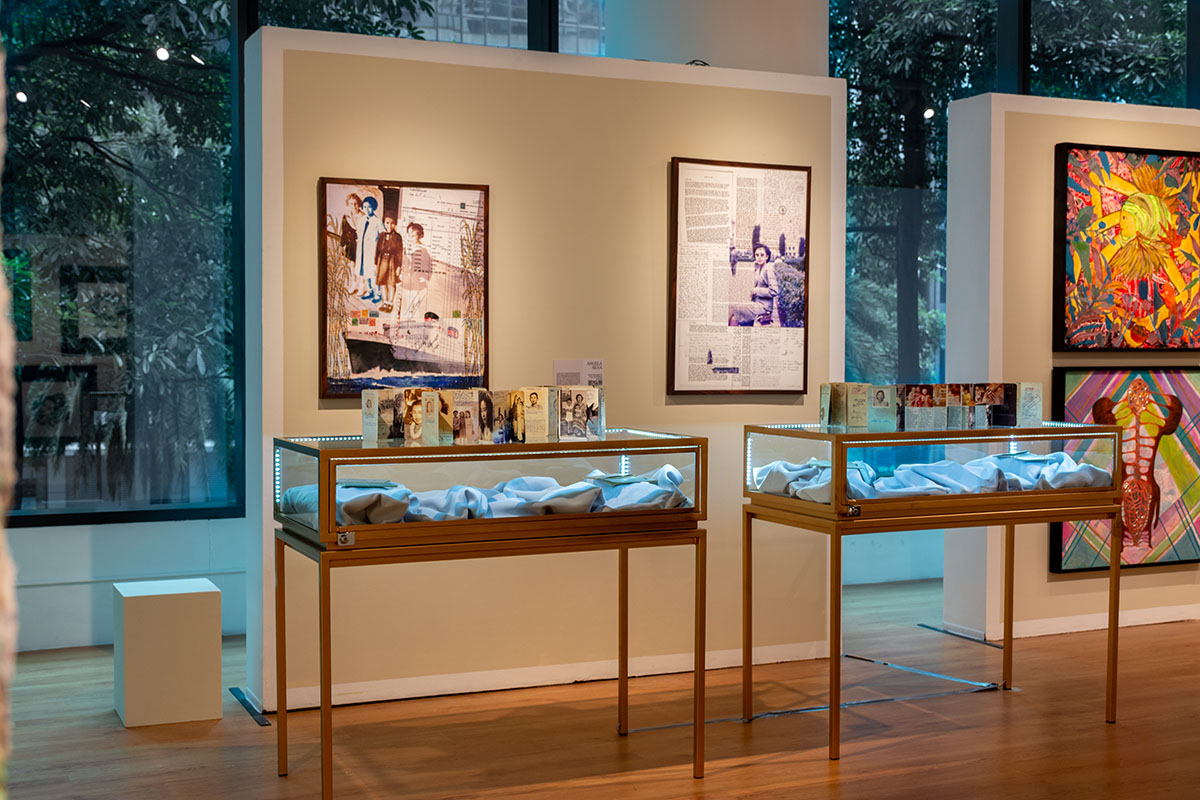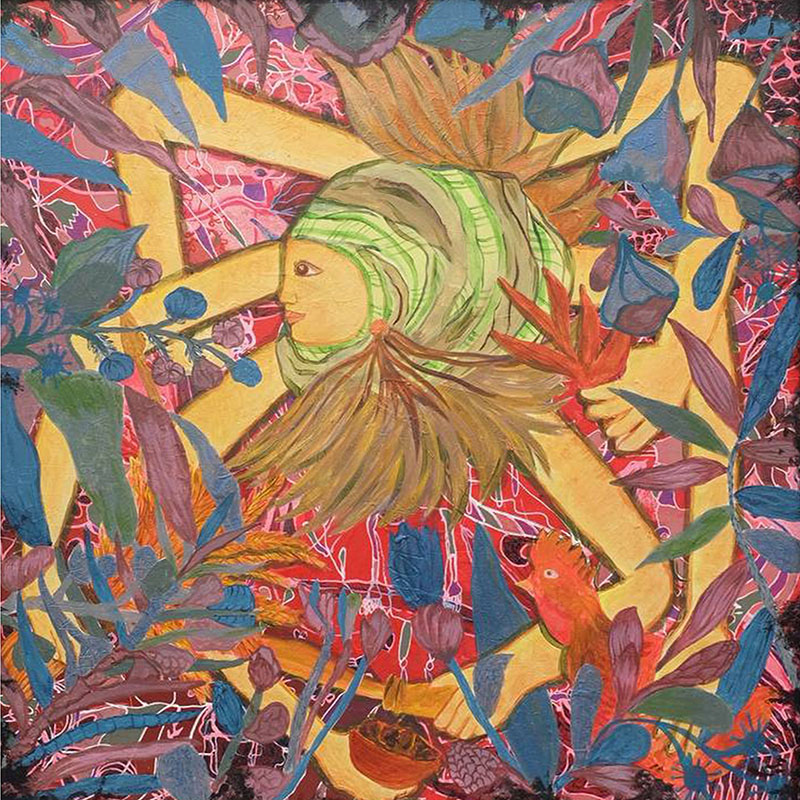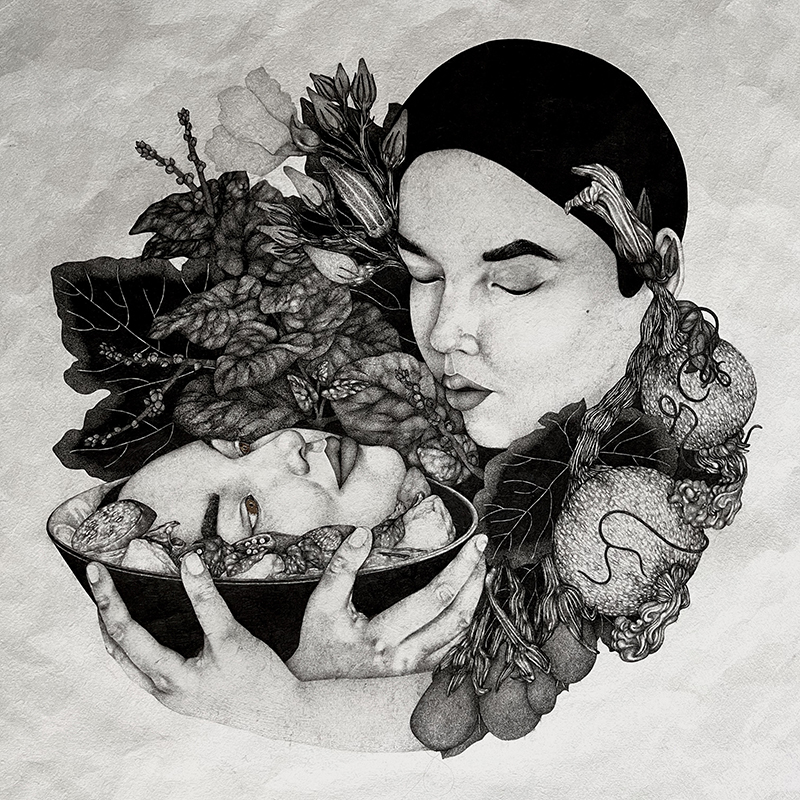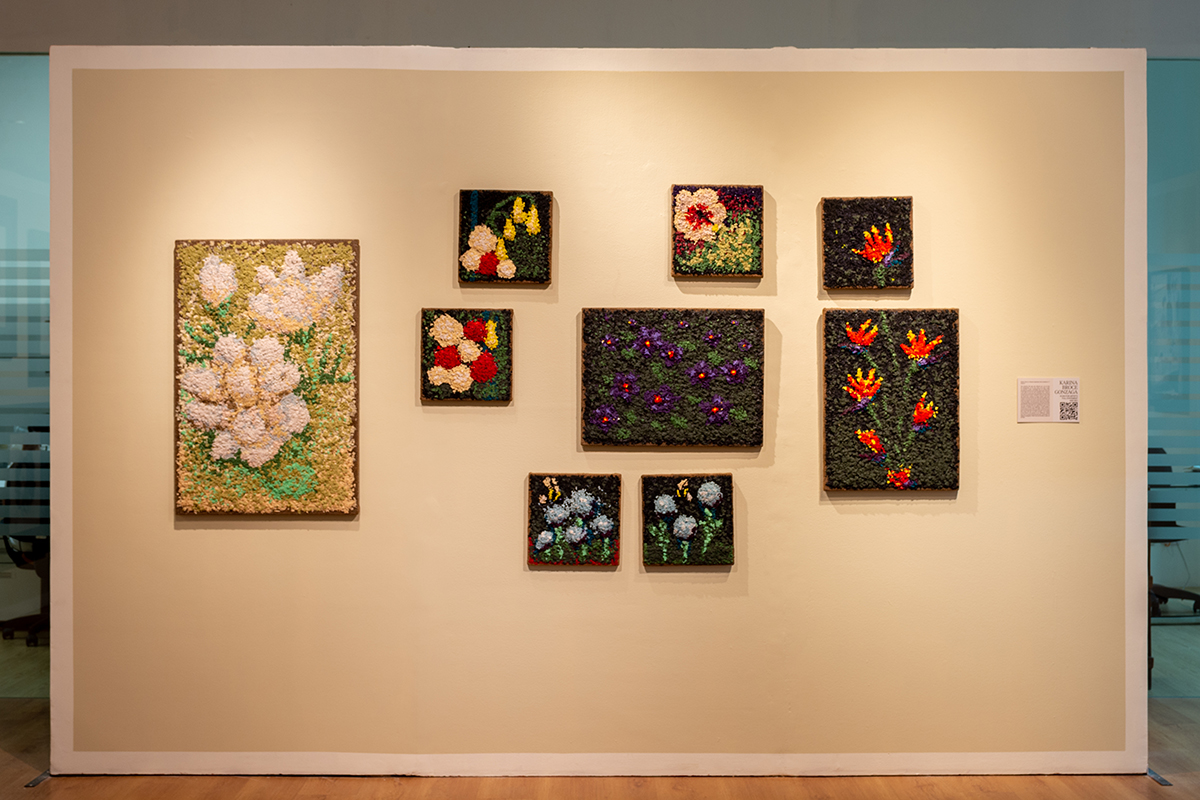“How has the lockdown affected your experience as a Negrense artist?”
That is the question curator Gina Jocson asked a group of women artists to respond to. Having experienced several iterations of lockdowns and quarantines, Jocson continues to establish Negrense artists in ‘Istorya Namon Subong (Our Stories Now).’ Operative though the word may be, we, too, are living through this experience. That leaves us to ask whether these stories are relevant even if one isn’t a Negros native or is a woman?
To the unfamiliar, patrons of Art Fair Philippines had a chance to acquaint themselves with some the artists in this show, as they were part of ‘Istorya conTEXT: Amon Ni” that Jocson also curated. In Ilonggo, “istorya” takes its root from the Spanish word “historia” and is used as both a noun and verb present in everyday speech, denoting a narrative (istorya) in the form of light gossip or historical account, or the act of it (istoryahanay). Storytelling, as employed by Jocson in this exhibition, is one way we relate to each other.
Several works deliver poignant vignettes of life in Negros Occidental. Erika Mayo’s works are telling of the exceedingly rampant cases of violence against women in Negros since the passing of the 2020 Anti-Terror Law. Her painting Dakpan! Ikaw taya! (Langit Lupa) (Tag! You’re it!) alludes to this reality that plagued female activists who have been red-tagged and targeted by authorities. She likens the reality to a game of tag or "Langit o Lupa" (Heaven or earth) drawing parallels to how women of lesser social standing are more vulnerable to these abuses.
On a lighter note, viewers are taken back to a time of tranquility and peace with Josephine Turalba’s Tawhay. This custom Mahjong set references how generations of women have enjoyed the game and the tender moments they have shared from chatting or gossiping as the tiles shuffle in between rounds. Each Mahjong suit is adorned with local flare by incorporating references to the farming seasons in Negros and icons unique to the province, the imagery of which is lifted from the accompanying paintings Turalba had made.
Angela Silva’s All About Her is a collection of two collages and artist books fashioned in the likeness of passports and journals. These unfold accounts shared to her by the people who witnessed her mother grow up in Negros Occidental. Silva invites viewers to physically engage with the work to get to know her mother as if they were meeting her in real life. Recreated and recreational, All About Her is a deep dive into the artist’s examination of her roots by individuating the roles her mother assumed during her lifetime.
Moreen Austria chose to share how the Bacolod community coped with the lockdown blues. As it struggled against the dwindling flow of money and lack of supplies, a Bacolod-based mother started the online “Bacolod Barter Community.” This barter renaissance boomed not only because it eased access to essential goods but also as a repository of stories where acts of kindness lay at the core. This renewed Austria’s faith in humanity, inspiring her to capture this in her sculptures. She emphasizes the women from these virtual spaces, who eventually started “Plant Swap Bacolod,” a spin-off from the original barter group that gave plantitas (female plant enthusiasts) space to barter plants.
Another set of sculptures in the exhibition is by Megumi Miura. Her Kapawa (Illuminate) series depict the sacada and dumaan – female sugarcane and field laborers respectively – underscoring how expectations from them as mothers, daughters, or breadwinners remain despite the added pressures brought by the pandemic. This led to her playing with the duality of kitsch head covers worn by laborers in which figures in her sculptures all wear. These originally function as protection from heat and elements in their work environment, now doubling as masks against the virus as well. Miura believes that this fashion will persist even after the pandemic, much like how laborer’s poor working conditions or unfair wages are unchanged regardless of the challenges that come their way.
Elwah Gonzales, meanwhile, spent a good amount of the lockdown revisiting her fascination with Visayan folklore, passed orally down generations. This gives the artist rein to reimagine the goddess Dalikmata, a figure of sympathy, and the Babaylan, a predominantly female communal leader and shaman known for their strength and courage. Her interpretations of these mythical figures intertwine with her own identity. In creating these works, these mythical characters served as muses for the artist to persevere during the lockdown.
Katarina Estrada, who is now based in Manila, revisits her Negrense roots after finding respite in cooking as a way to ease her anxiety. For her, the act of cooking brings back memories of happier times, particularly of her grandmother’s hearty soup of Las-wa. She illustrates a series of self-portraits that revolve around cooking. Estrada’s subject acts as a catalyst to one’s sense of maturity as it functions as a rite of passage, considering that all the women in her family mastered this skill.
And finally, there is the story of Karina Broce-Gonzaga’s nostalgic return to her grandmother’s garden. Broce-Gonzaga had taken to her closet, discarding clothes and giving them to the women who took turns working for her mother in San Carlos, Negros Accidental, where she spent her childhood. What remained of these discarded clothes were then cut up into pieces by the artist, as if it were a ritualistic cleanse from the consumerism of the old normal. The artist had, during this time, retreated to a simpler lifestyle, in turn having her recall the gardens of her childhood. The shredded cloths figured themselves in the creation of her a mosaic-like series that depict flowers that her paternal grandmother planted.
A good look at the works in ‘Istorya Namon Subong’ show that the artists do more than simply document their experience of the lockdown. The perspectives they offer are their own, fixed on where they find themselves at this moment in time. That said, there isn’t a better time than now to give women artists a chance to make themselves known. After all, good stories don’t require their audience to identify with the author to be compelling.
Challenging as it is to be an artist from the regions, ‘Istorya Namon Subong’ puts the Negrense identity front and center, providing portraits of Negrense women artists of this time.
The exhibition is still on view at the Salcedo Private Auction and will run until May 8, 2021.
All images courtesy of Salcedo Private Auction and the artists.
Minor edits have been made to the published article for accuracy.







